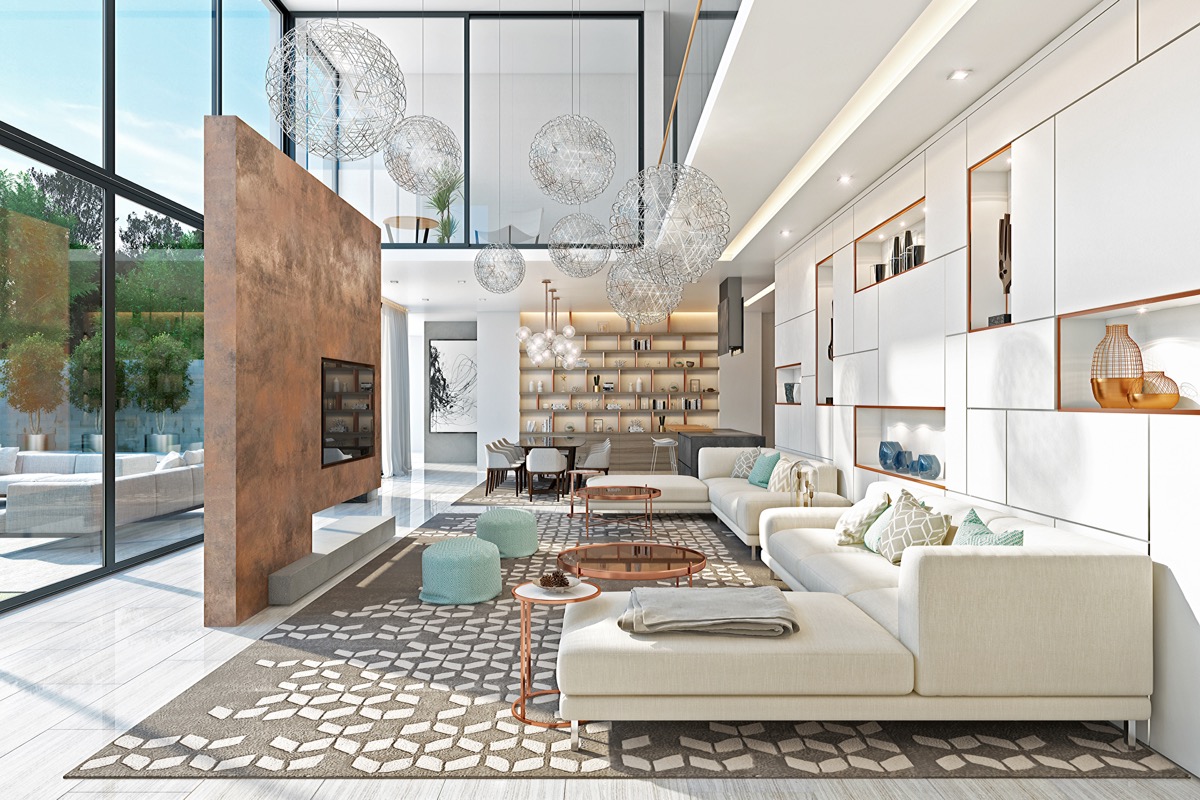Lighting is an essential element in any room, but it becomes even more important in larger spaces. Proper lighting can enhance the aesthetic of a space and make it more functional, while poor lighting can make a space feel dull and uninviting. Here are some tips for lighting larger spaces:
- Use multiple light sources: One overhead light source may not be enough to properly light a larger space. Instead, consider using a combination of different light sources such as floor lamps, table lamps, and wall sconces to create a well-balanced lighting plan.
- Layer your lighting: Layering lighting refers to using different types of lighting at different levels to create a sense of depth and dimension in a space. For example, you might use recessed lights in the ceiling for general lighting, floor lamps for task lighting, and table lamps for accent lighting.
- Consider the function of the space: Think about how the space will be used and choose lighting accordingly. For example, a home office may need more task lighting for reading and writing, while a living room may need softer, more ambient lighting for relaxing.
- Choose the right bulbs: Different types of bulbs can create different moods and atmospheres in a space. For example, warm white bulbs create a cozy atmosphere, while cool white bulbs provide a more energetic vibe. Consider the look and feel you want to achieve in the space when selecting bulbs.
- Don't forget the outdoors: Outdoor lighting is just as important as indoor lighting and can enhance the look and feel of your home. Consider adding landscape lighting, porch lights, and outdoor wall sconces to create a welcoming atmosphere.
- Use dimmer switches: Dimmer switches allow you to adjust the intensity of the light in a space, which can be especially useful in larger spaces that may require different levels of lighting at different times of day. For example, you might want a brighter light for activities like cooking or working, but a softer, more ambient light for relaxing or entertaining.
- Consider the height of the space: In very high ceiling spaces, it may be difficult for light to reach the lower levels of the room. In these cases, you may need to use additional light sources such as floor lamps or table lamps to ensure that the entire space is properly lit.
- Think about the direction of the light: In addition to the intensity of the light, the direction of the light can also affect the look and feel of a space. Uplighting, for example, can create a sense of drama and draw the eye upwards, while downlighting can create a more subtle, relaxing atmosphere.
- Use natural light to your advantage: Natural light is a great source of lighting, especially in larger spaces. Consider using windows and skylights to bring in natural light, and use window treatments such as sheer curtains or blinds to control the amount of light that enters the space.
- Don't forget about energy efficiency: Larger spaces may require more lighting, which can lead to higher energy bills. Consider using energy-efficient bulbs and lighting fixtures to reduce your energy consumption and save money on your monthly bills.
By considering these factors, you can create a well-lit larger space that is both functional and aesthetically pleasing.
 British Pounds
British Pounds
 Euro
Euro

